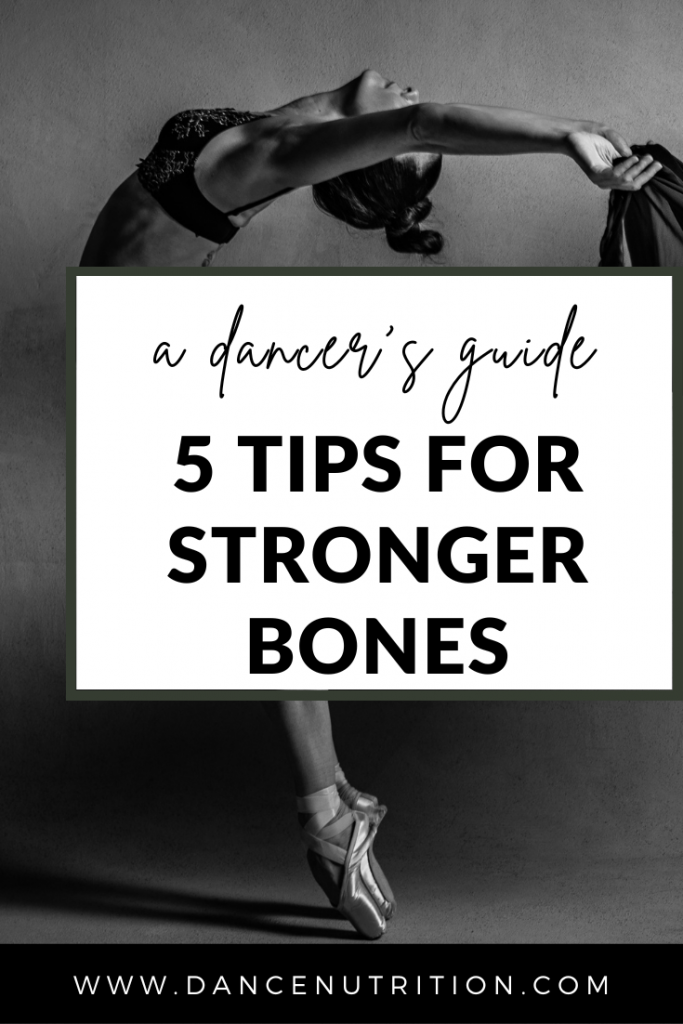Why Should Dancers Prioritize Bone Health?
Relevés, jumps, and repeated impact are just the beginning— dancers place tremendous physical demand on their bones. Research consistently shows that dancers are at a higher risk for stress fractures and low bone mineral density compared to the general population. The risk is even greater for those navigating disordered eating or chronic under-fueling.
Despite its tough exterior, bone is living tissue, composed of blood vessels, cells, proteins, and minerals. From childhood through your early 20s, your body builds bone mass, eventually reaching what’s called peak bone mass. This is the strongest your bones will ever be. From there, your body maintains and repairs that mass throughout life.
That’s why the choices you make in your teens and early 20s matter so much. Prioritizing proper nutrition now lays the foundation for resilience and strength later on. In other words, the stronger your bones become by your 20s, the stronger they remain as you age. Here’s how to support your bones— starting today.
5 Steps to Build and Maintain Strong Bones
#1: Eat Enough and Get Comfortable With Calories
This might be the most important piece of advice: if you’re not eating enough, your bones are at risk.
Your body needs energy (calories) to fuel every system— including bone repair and regeneration. When your intake doesn’t match your output (hello, daily classes, rehearsals, and cross-training), your body diverts energy away from non-essential systems. That includes reproductive function and—yep— bone health.
This mismatch is known as Relative Energy Deficiency in Sport (RED-S). One of its most dangerous effects is the hormonal disruption that leads to lower bone density and a higher risk of fractures. Your first line of defense: build a meal plan that supports your body’s needs. This is easier said than done, but I have several resources to get you started:
- How many calories does a dancer need to eat?
- Why snacks throughout the day are non-negotiable
- How to overcome food fears that hold you back
#2: Stop Fearing Dietary Fats
If you’re avoiding fats, your hormones— and your bones— might be suffering.
Hormones are chemical messengers that regulate everything from energy to menstruation to bone growth. Many key hormones involved in bone health, including estrogen and testosterone, are made from dietary fats, particularly cholesterol.
If your diet is low in fat, your body isn’t receiving the tools needed to build these hormones. Chronic low-fat eating (or fear of high-fat foods) can lead to irregular periods, low testosterone, and ultimately reduced bone density. This is especially dangerous for pre-professional dancers still building their peak bone mass.
Fat doesn’t just belong in your diet; it belongs in every meal and snack. Learn more about the best fats for dancers in this article.
#3: Work With a Licensed Practitioner
Bone strength is essential for both your short-term performance and long-term health. Medical Nutrition Therapy (MNT) can be a game-changer for dancers at risk of injury or dealing with nutritional concerns.
A Registered Dietitian Nutritionist (RDN) is uniquely qualified in this work, guiding dancers toward:
- Meeting daily nutrient needs
- Addressing hormonal imbalances
- Identifying supplementation needs
- Understanding bone health with tools like a DEXA scan (a painless test that measures bone density)
A bone density scan can help detect early signs of osteopenia or osteoporosis and guide the next steps in your care plan. This kind of preventive care is especially important for dancers managing a history of disordered eating or irregular periods.
#4: Prioritize Key Bone-Building Nutrients
Bone health doesn’t come down to just calcium! It’s a team effort. Here are the top nutrients that work together to support strong bones:
- Calcium & Vitamin D: Found in dairy and fortified alternatives (soy milk, almond milk), leafy greens, canned salmon, mushrooms, and egg yolks.
- Phosphorus: Present in meat, dairy, whole grains, and even chocolate!
- Vitamin K: Found in green vegetables like kale, spinach, and broccoli.
- Vitamin C: Abundant in citrus fruits, bell peppers, and strawberries.
While food should always come first, some dancers may need supplements, especially those with dietary restrictions or limited sun exposure (hello, indoor rehearsals!). I offer a free training on how to take a food-first approach to nutrient intake.
#5: Reconsider Your Weight Goals
Here’s the truth: your bone health is deeply connected to your body weight.
Dancers often strive for thinness, but being underweight increases the risk of low bone density, particularly when combined with energy deficiency. The healthiest dancers learn to respect their set point weight, or the natural weight range at which their body feels most stable, energized, and hormonally balanced.
Your set point is your “happy weight.” It’s controlled biologically and pre-determined genetically. Shifting your mindset around body image can be one of the most powerful steps you take for long-term health.
Want to dig deeper? Start with these:
- If you fear weight gain, start here.
- If you’re curious about what it means to be a healthy weight, check this out.
- If you want to lose weight, read this.
- If you’re interested in healthfully gaining weight, read this.
Key Takeaways: Your Bones Are Your Foundation
As a dancer, your bones do more than hold you up; they absorb shock, enable movement, and sustain the art you create. They deserve care and nourishment, just like any other part of your body. And that care starts with consistently eating enough, embracing fats, and listening to your body’s needs.
When in doubt, don’t go it alone. A licensed nutrition expert can help you stay strong onstage and off. Here are a few related reads to get you started:
- Dancers and RED-S: What You Need to Know
- How to Eat for Performance and Longevity
- Hormonal Health for Dancers




